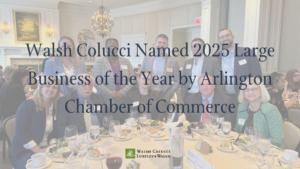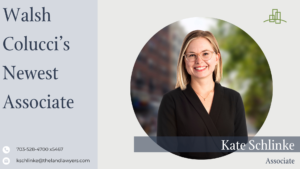
The U.S. Department of the Treasury recently issued guidance on the qualified opportunity zone (“QOZ”) tax incentive, which was added to the Internal Revenue Code by the Tax Cuts and Jobs Act of 2017. The tracts of land in Virginia that are eligible for special tax treatment as QOZs have since been chosen by the Governor, and certified by the U.S. Treasury Secretary. This is exciting news for the development community because the U.S. Department of the Treasury is one step closer to implementing this tax incentive which specifically targets real estate investors.
The goal of the QOZ tax incentive is to provide a deferral of capital gains taxes to developers that invest in property and businesses in areas of the United States that would benefit especially from increased economic stimulus. The Governor of Virginia was delegated the authority to decide which tracts of land in Virginia qualify as QOZs. Therefore, QOZs are areas of Virginia that the Governor has determined present a great opportunity for investors to substantially increase economic stimulus in such areas through real estate and business venture investments. There are two steps, outlined below, that are part of the process for investors to be eligible to receive the QOZ tax incentive.
The first step in the process to be eligible for the tax incentive is for the investor to determine whether it will invest directly in qualified opportunity zone property, or indirectly in an entity that owns the qualified opportunity zone property. A number of entities can qualify for the tax incentive, including limited liability companies, C-Corporations, partnerships, or any other entity classified as a domestic corporation or domestic partnership.
If the investor chooses to create a Qualified Opportunity Fund (“QOF”) and purchase assets directly with it, the QOF must hold at least 90% of its assets in qualified opportunity zone property, or have at least 90% of its capital invested directly in qualified opportunity zone property. Depending on the investor’s portfolio, the requirements to qualify as a QOF by holding only direct investments may be quite onerous because 90% of the QOF’s real and tangible property must qualify as qualified opportunity zone property.
The investor may find it easier to meet the requirements of becoming a QOF by qualifying a parent entity as the QOF, and using a subsidiary entity that qualifies as an Opportunity Zone Business (“OZB”) to invest in qualified opportunity zone property. Indeed, “qualified opportunity zone property” also includes “qualified opportunity zone business property” or equity interests in an OZB. In this situation, the qualified opportunity zone property held by the QOF could be stock or partnership interests in an entity that qualifies as an OZB.
An entity can qualify as an OZB if at least 70% of the tangible property it owns or leases is qualified opportunity zone business property when the QOF acquires its interest in the entity, and during substantially all of the time the QOF holds its interest in the entity. “Qualified opportunity zone business property” is tangible property used in the trade or business of the OZB, and (i) acquired after December 31, 2017; (ii) the original use of the property begins with the OZB, or the OZB substantially improves the property; and (iii) during substantially all of the time the OZB holds the property, substantially all of the property’s use was in the QOZ. For example, a corporation can qualify as a QOF if 90% of its investments are membership interests in a limited liability company, and 70% of the limited liability company’s assets and investments are held in qualified opportunity zone business property.
Additionally, there is a safe harbor contained in the guidance, which allows a QOF to hold assets and working capital that are not qualifying, such as cash, which results in the QOF having less than 90% of its total investments in qualifying property. The safe harbor allows the entity to remain a QOF if (i) the QOF has a written business plan that identifies the property and explains how the non-qualifying property is being held for the acquisition, construction, or substantial improvement of qualified opportunity zone property, (ii) the QOF has a written schedule that itemizes how the non-qualifying property will be utilized in a 31 month period, and (iii) the QOF stays on course with its written plan and schedule for its use of the non-qualifying property. This safe harbor is a means by which investors can hold cash in a QOF for purposes of investing in qualifying property, and maintain the status of the QOF, even though the 90% rule has been broken by holding the non-qualifying property.
The second step to become eligible to receive the tax incentive is to invest capital gains that were realized after December 21, 2017 from the sale of real property to a third party into a QOF, or OZB as the case may be, within 180 days of the date those capital gains were realized. The tax incentives include a deferral of taxes on capital gains that would have been realized prior to December 31, 2026. If the investment is held for ten years, there will be an increase in the basis of the investment equal to its fair market value on its sale or exchange date. If the investment is held for longer than seven years there will be a 15% reduction of the deferred capital gain, and if the investment is held for longer than five years there will be a 10% reduction.
It is important for investors to begin considering whether they want to take advantage of this program and how they will become eligible to do so because the proposed guidance suggests there could be cut-off dates for eligibility under the program. The guidance suggests the designation of the QOZ areas will expire on December 31, 2028. Property purchased after that time will not be eligible under the program, while property purchased prior to that time will be eligible so long as the investment is sold or exchanged by January 1, 2048. We have yet to see what other restrictions are contained in the regulations, and how the current proposal is changed prior to its implementation.
A map which shows the locations of the QOZs in the jurisdictions of Virginia where Walsh, Colucci, Lubeley and Walsh, P.C. focuses its practices is available upon request. Please contact Chuck McWilliams with questions regarding forming new or converting existing entities to take advantage of the program, or purchasing property in any of the QOZs. Please also note that this article does not incorporate the proposed rules and guidance released by the IRS after April 17, 2019, but we plan to publish another article in the near future to address that guidance.






